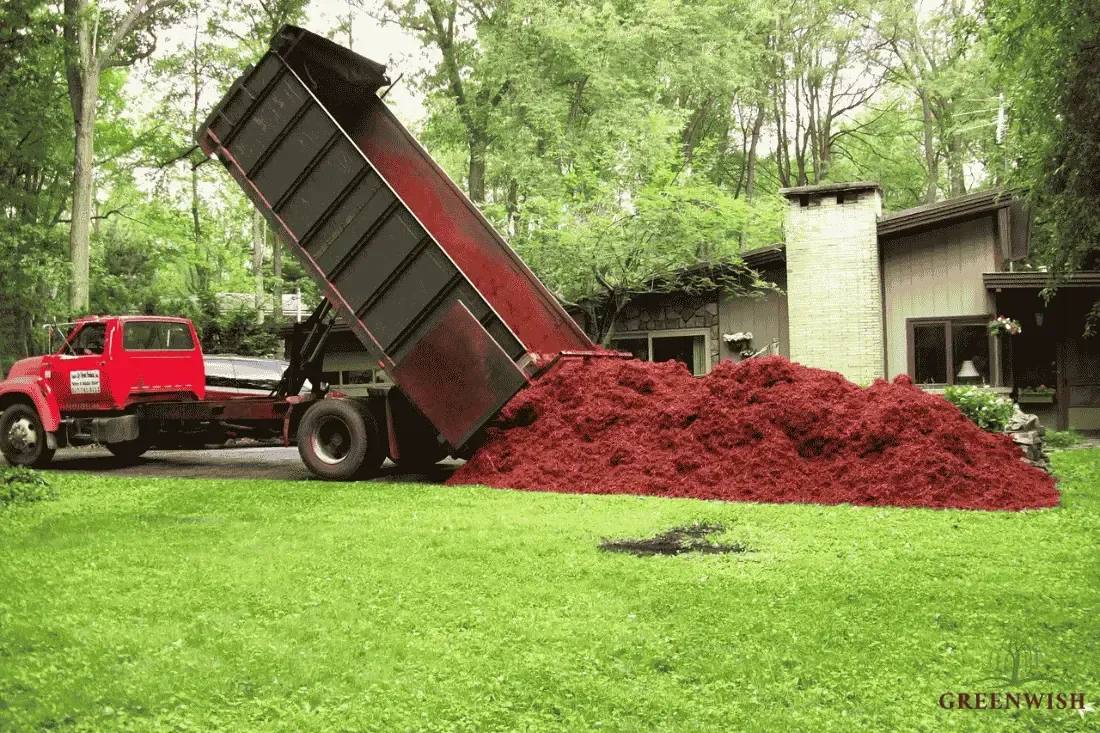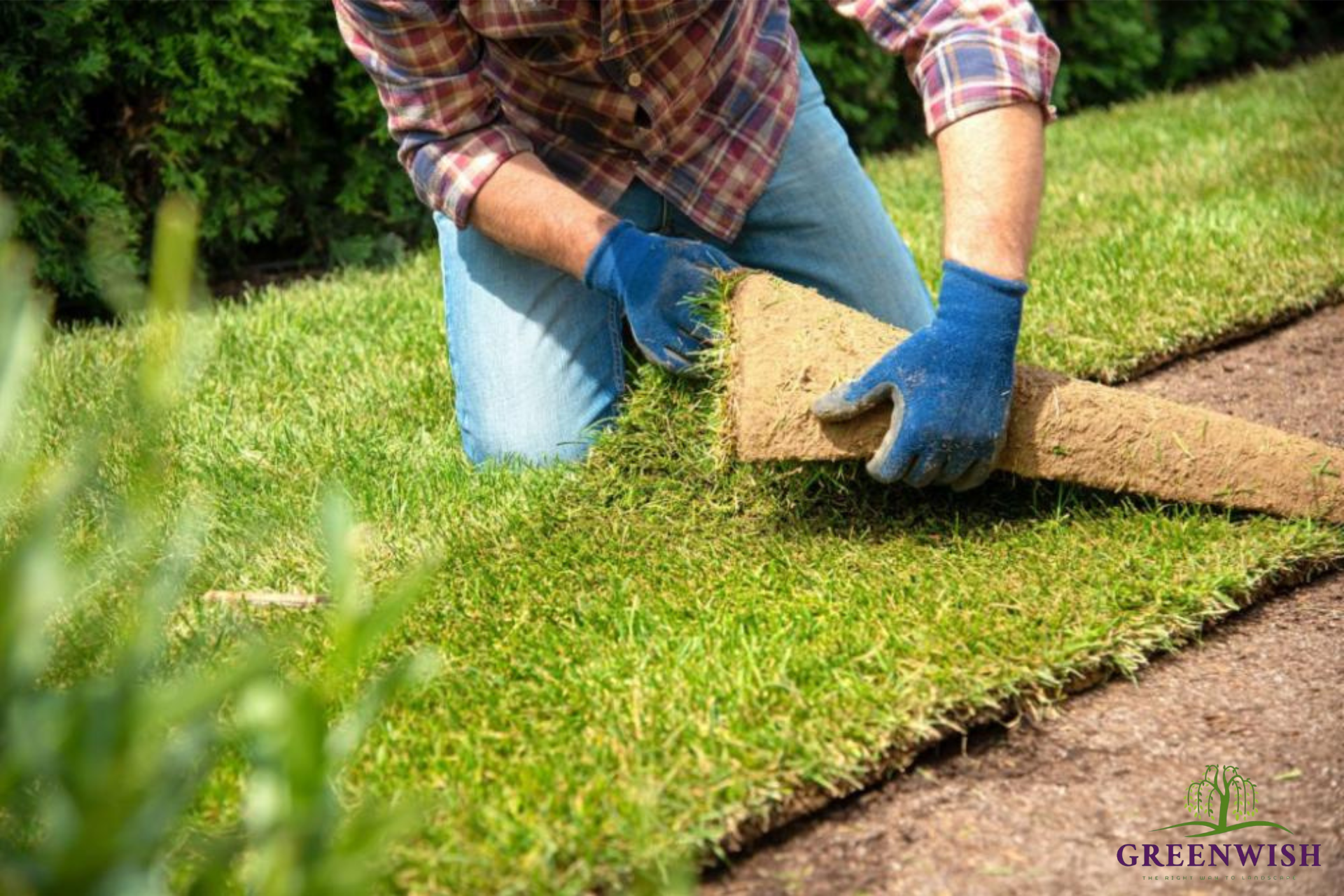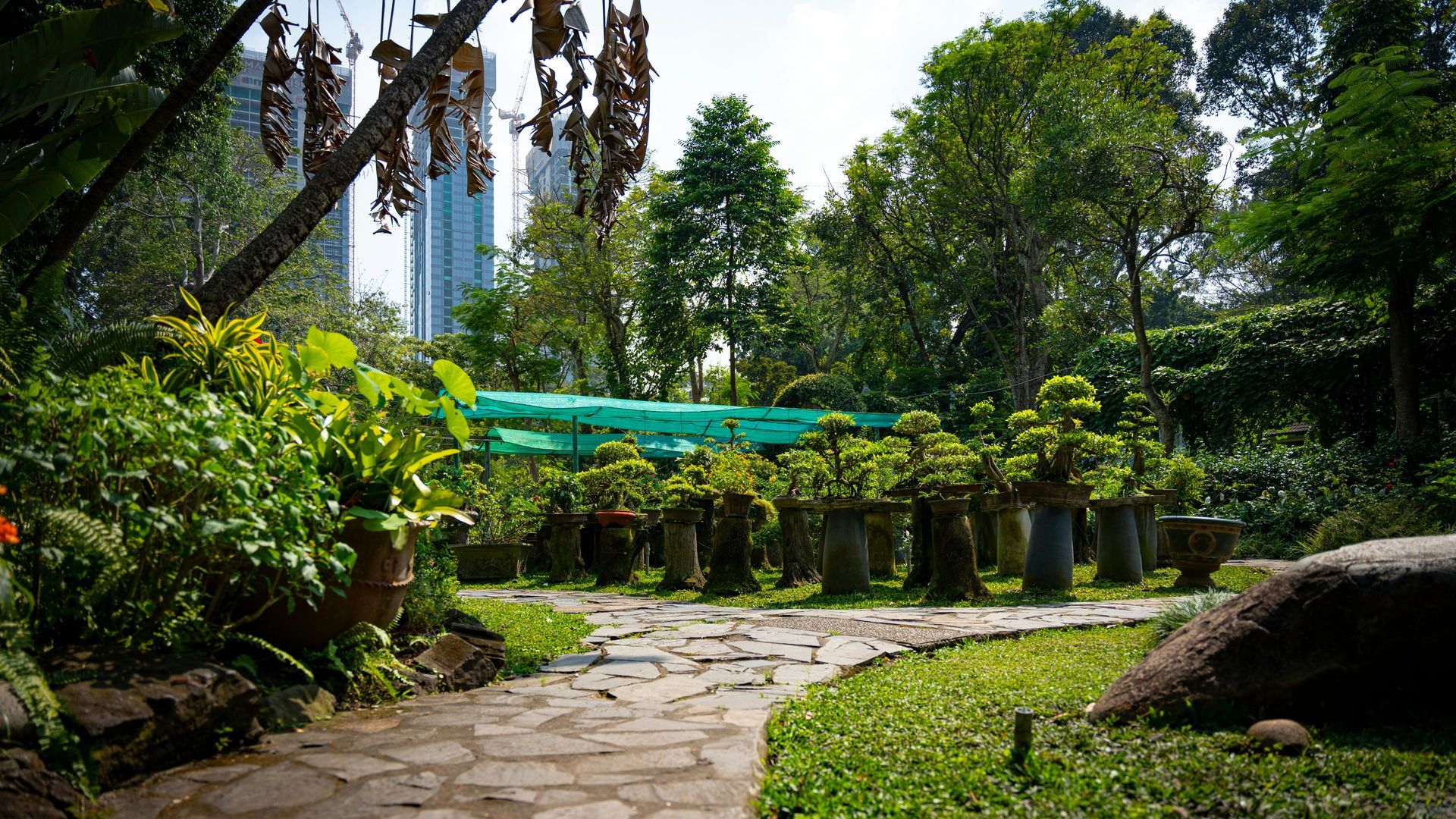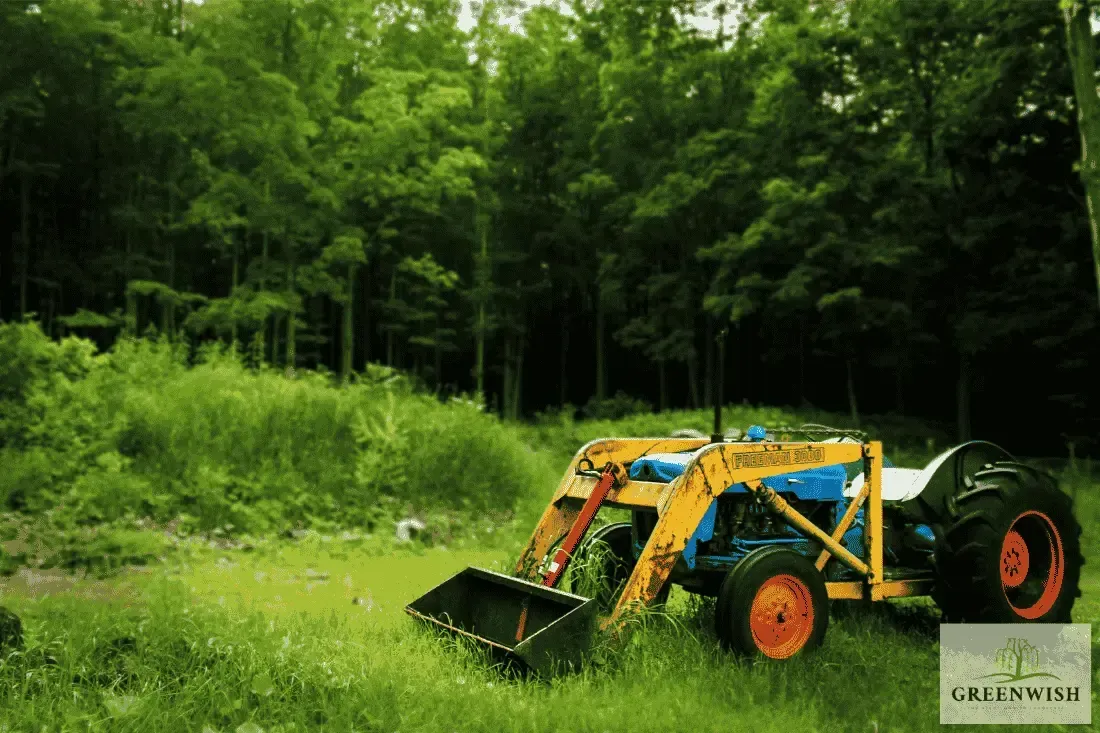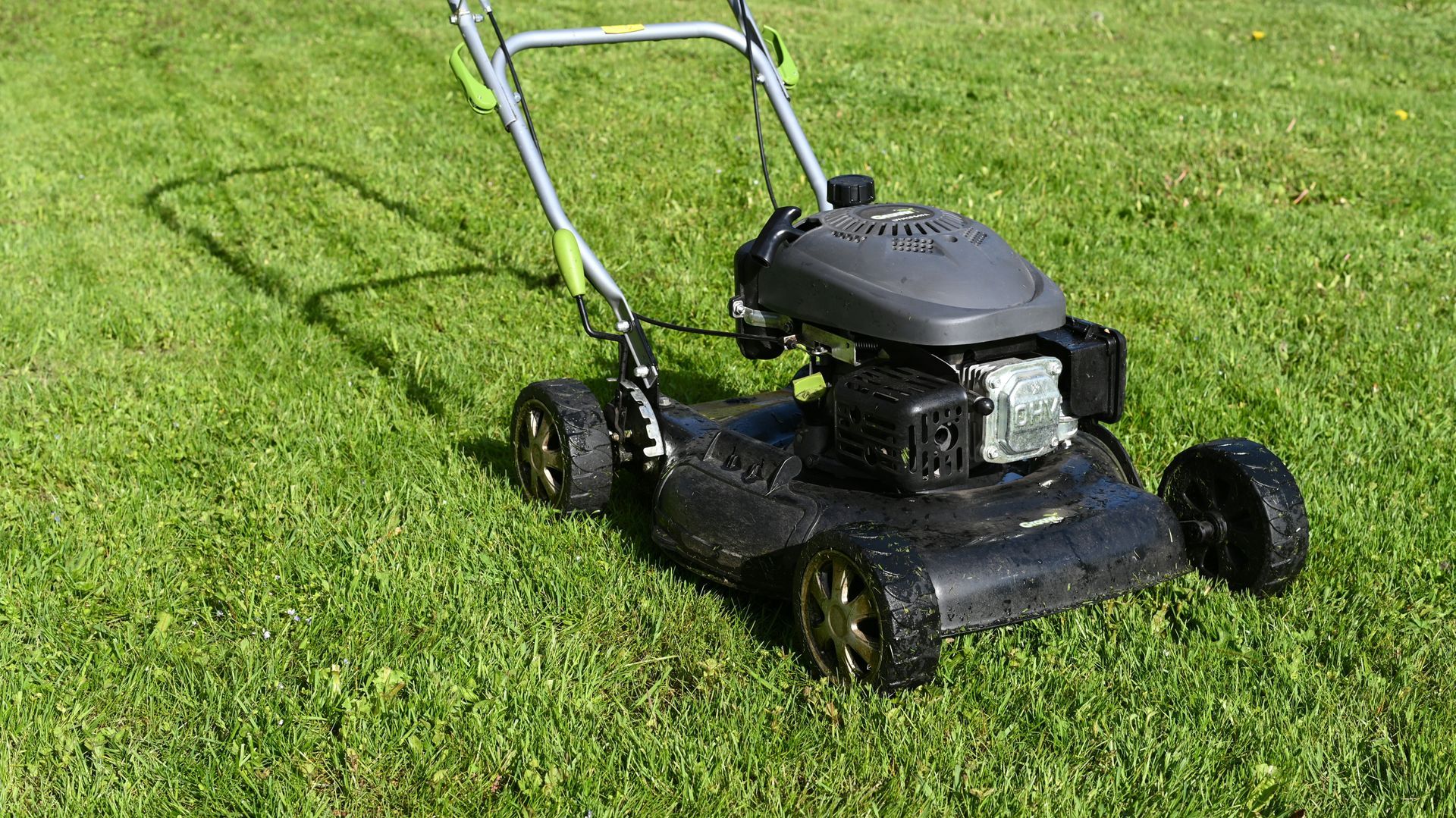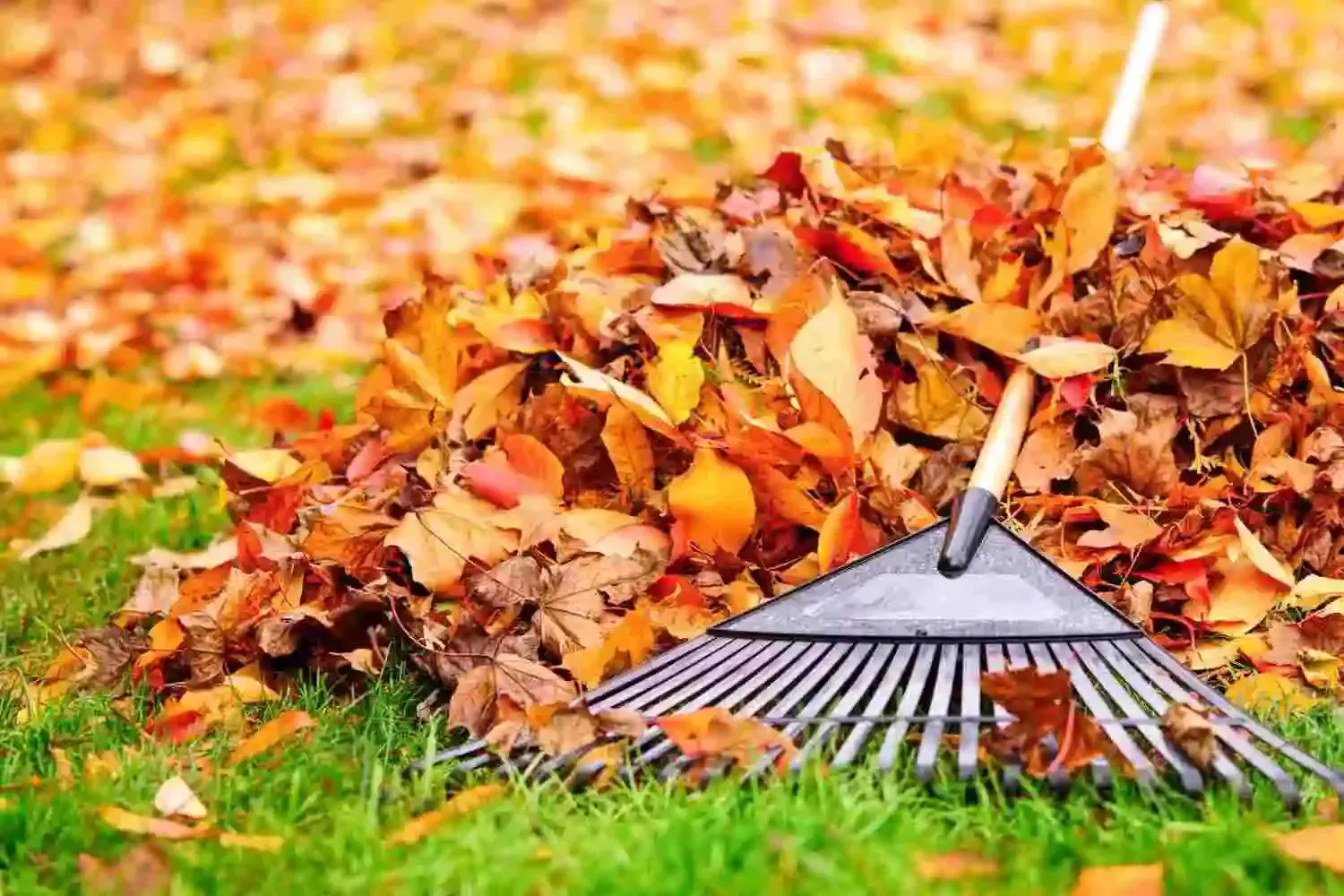How to Cut Down a Tree Safely | Expert Tree Cutting Tips & Costs

Cutting down a tree is one of the most challenging and dangerous tasks a homeowner or property manager can face. Whether you are searching for how to cut down a tree, considering DIY tree cutting, or comparing costs for hiring professionals, the right knowledge makes all the difference. Trees can weigh tons and fall unpredictably if handled poorly, putting lives, property, and landscapes at risk. That’s why mastering safe and effective tree cutting techniques is crucial.
Why This Guide Matters
This isn’t just another article—it’s a complete, professional resource on cutting down trees safely and responsibly. We cover practical advice, safety standards, and advanced tips so you know exactly what to expect, whether you do it yourself or call the experts.
What You’ll Learn in This Blog
Here’s what we’ll walk through step by step:
- When and why to remove a tree – knowing the signs it’s time to act.
- Safety precautions and protective gear – staying safe from common risks.
- Essential tools for tree cutting – from chainsaws to wedges.
- Step-by-step tree felling guide – including notch cutting and retreat planning.
- How to cut down a tree with a chainsaw – best practices and dangers to avoid.
- Tree cutting techniques – for small, large, leaning, and risky trees.
- How to cut tree branches properly – pruning methods that protect tree health.
- Tree cutting costs explained – answering “how much is it to cut down a tree?”
- DIY vs. professional tree removal – when to call in the pros.
- Environmental considerations – cutting responsibly and sustainably.
- Common mistakes to avoid – lessons from arborist best practices.
- FAQs answered in detail – from the 5 steps of felling to Dutchman cuts.
By the end of this guide, you’ll know not just how to cut a tree, but how to do it with confidence, precision, and respect for safety. Whether you plan to tackle a small backyard tree or are simply researching before calling professionals, this blog will provide the depth, detail, and professional insights you need.
Why Learn How to Cut Down a Tree?
Understanding how to cut down a tree is not only about saving money—it’s about knowing when and why tree removal is necessary. Trees sometimes must be removed due to safety concerns, structural risks, or landscaping needs.
- Diseased Trees: Trees infected with fungi or rot can fall suddenly. Cutting down trees that are unhealthy prevents accidents.
- Safety Hazards: Trees leaning dangerously near homes or power lines pose serious risks. Knowing how to cut a tree down correctly can prevent costly damages.
- Storm Damage: Lightning or heavy winds can weaken a tree, leaving it prone to falling later. In such cases, removing a tree quickly can be lifesaving.
- Landscaping Needs: Sometimes, you need space for construction, gardening, or improving the health of surrounding trees. Knowing tree cutting techniques helps you clear space responsibly.
If you don’t understand how to cut down a tree properly, you could injure yourself, damage property, or face legal issues if local regulations require permits.
Safety First: Precautions Before Cutting Down Trees
Before you even think about starting the process of cutting down trees, you need to understand that safety must come first. Learning how to cut down a tree safely is about more than grabbing a chainsaw—it’s about preparation, awareness, and protective measures that can prevent life‑threatening accidents. Every year, thousands of injuries are reported from improper tree cutting techniques, making it one of the most hazardous tasks in landscaping and property maintenance.
Wear the Right Safety Gear
When preparing for tree cutting, proper personal protective equipment (PPE) is non‑negotiable. At a minimum, you’ll need:
- A hard hat to protect against falling branches (often called “widowmakers”).
- Safety goggles or a full‑face shield to guard your eyes from flying debris.
- Hearing protection if using loud tools like chainsaws.
- Heavy‑duty gloves to improve grip and protect your hands.
- Steel‑toed boots with non‑slip soles for stability.
- Chainsaw chaps or cut‑resistant pants to prevent severe leg injuries.
Check the Surroundings
Part of safe tree cutting is surveying your environment. Before you begin, look for:
- Power lines overhead—if the tree is near them, call professionals immediately.
- Buildings, fences, or vehicles that could be damaged if the tree falls the wrong way.
- Nearby trees whose branches may interlock and affect how your tree falls.
- Slopes, uneven ground, or wet soil that could affect your footing or the tree’s fall.
Evaluate the Tree’s Condition
Understanding the health of a tree is vital before removing a tree. Ask yourself:
- Is the tree leaning unnaturally?
- Are there signs of rot, hollow areas, or cracks in the trunk?
- Are there many dead branches up high that may break unpredictably?
- Is the tree stable enough to allow safe cuts, or is professional removal the only safe option?
Clear Escape Routes
Every guide on how to cut a tree down emphasizes the importance of escape routes. You should:
- Plan at least two escape paths at 45‑degree angles away from the direction of the fall.
- Walk these paths before starting the saw to make sure they are clear.
- Remember the 5‑15‑90 rule: 90% of injuries occur within 5 feet of the tree, in the first 15 seconds after it begins to fall.
Never Work Alone
Even if you are confident in your tree cutting techniques, you should never attempt to fell a tree without at least one other person nearby. An assistant can call for help in case of an accident, keep others out of the danger zone, and provide an extra set of eyes while you focus on the cuts.
By following these detailed precautions, you ensure that your approach to cutting down trees is rooted in safety and preparation. Only once these steps are complete should you move forward to choosing the right tools and planning your cuts.
Essential Tools for Cutting Down Trees
To master how to cut a tree down, the right tools are essential. Poor or dull equipment makes the job unsafe.
- Chainsaw: The most important tool for tree cutting. For large trees, use a gas-powered saw. For smaller ones, electric chainsaws work well.
- Hand saw or pruning saw: Great for smaller jobs like learning how to cut tree branches.
- Axe: Still useful for wedges or backup cutting.
- Felling wedges: Prevents the saw from pinching and directs the tree’s fall.
- Ropes and pulleys: Used in advanced tree cutting techniques for controlling fall direction.
- Ladders or climbing gear: Helpful when pruning or sectioning a tree before removal.
Having well-maintained tools is key for effective cutting down trees.
Step-by-Step Guide: How to Cut Down a Tree
When it comes to how to cut down a tree, following a structured, safe, and professional process is essential. This section breaks down each stage of tree cutting so you know exactly what to do and when. Whether you’re learning how to cut a tree with a chainsaw or planning the fall direction for a large trunk, these steps ensure you approach cutting down trees with confidence.
Step 1: Assess the Tree and Surroundings
Before making a single cut, carefully evaluate the tree’s lean, size, and health. Walk around it and look for potential hazards. This aligns with the first part of the five-step tree felling plan: identify hazards and decide if it’s safe to proceed. If power lines, heavy lean, or large dead branches are involved, call a professional tree service.
Step 2: Plan the Direction of the Fall
Knowing how to cut a tree so it falls where you want is one of the most critical skills in tree cutting. Use the “stick trick” method: hold a stick at arm’s length and line it up with the tree’s top and bottom. This helps estimate where the tree will land. Make sure the landing zone is clear of people, pets, and property.
Step 3: Clear Escape Routes
Before starting the saw, create at least two escape paths at 45-degree angles away from the intended fall line. Remember the 5-15-90 rule: most injuries happen within 5 feet of the tree, in the first 15 seconds of its fall. Having escape routes ready protects you when the tree begins to move.
Step 4: Create the Notch Cut
The notch cut (also called the face cut) guides the direction of the fall. To do this:
- Make the top cut downward at about a 45-degree angle.
- Then make the bottom cut horizontally until it meets the top cut.
- The notch should go about one-third into the trunk. This step is vital when learning how to cut a tree down because it establishes the hinge that controls the fall.
Step 5: Insert Felling Wedges
If you’re working with a larger tree, insert felling wedges after making part of the back cut. These wedges prevent the tree from pinching your chainsaw and help guide it in the desired direction. Wedges are a key part of safe tree cutting techniques.
Step 6: Make the Back Cut (Felling Cut)
On the opposite side of the notch, cut slightly above the notch’s base. Cut steadily, but do not cut all the way through—leave a hinge of wood. This hinge controls the tree’s fall direction. As the tree begins to lean, remove your saw and retreat along your escape path.
Step 7: Retreat Safely
The moment the tree begins to fall, shut off your chainsaw, drop it if needed, and move quickly along your pre-planned escape route. Never run straight back; always retreat at a 45-degree angle away from the fall line.
Step 8: Limbing the Tree
Once the tree is down, the next task is limbing—removing branches. Start at the base and work upward. Always stand on the opposite side of the trunk from where you’re cutting. This is also where you’ll use safe practices for how to cut tree branches.
Step 9: Bucking the Tree into Sections
Bucking means cutting the trunk into manageable logs. Depending on your needs, you can cut them for firewood or easier disposal. Use proper support under the log to avoid pinching your chainsaw.
Step 10: Final Cleanup
Remove all debris, stacked wood, and branches from the site. This prevents hazards and leaves your yard safe and tidy after removing a tree.
By following this structured process, you ensure that your approach to cutting down trees is organized, safe, and effective. Each step builds on the previous one, combining safety with professional tree cutting methods that work for both small and large projects.
How to Cut Down a Tree with a Chainsaw
For many property owners, learning how to cut down a tree with a chainsaw is the most practical solution. Chainsaws are powerful tools that make the job of cutting down trees faster, but they require skill, precision, and respect for safety. This section explains everything from preparation to execution so you can confidently use a chainsaw for tree cutting.
Preparing Your Chainsaw
Before you start removing a tree with a chainsaw:
- Sharpen the chain – a sharp chain cuts cleanly and reduces the risk of accidents.
- Check bar oil and fuel – proper lubrication keeps the chainsaw running smoothly.
- Adjust chain tension – loose chains may derail, while tight ones can break.
- Inspect safety features – confirm that the throttle lock and chain brake function correctly.
Chainsaw Handling Basics
When learning how to cut a tree with a chainsaw, proper grip and stance are critical:
- Hold the saw with both hands, keeping a firm, balanced posture.
- Keep the chainsaw close to your body for better control.
- Work at waist or hip height—never cut above shoulder level.
- Always stay alert for kickback, especially when cutting with the nose of the bar.
Step-by-Step Chainsaw Cutting Process
- Mark the notch area where the tree should fall.
- Cut the face notch by making a downward cut at 45 degrees and a horizontal cut until they meet.
- Start the back cut on the opposite side, slightly higher than the notch base.
- Insert wedges to prevent the tree from leaning back on the chainsaw and to guide its fall.
- Leave a hinge of wood to control the fall direction.
- Retreat quickly using your escape route as soon as the tree begins to lean.
Chainsaw Safety Tips
- Wear full PPE: helmet, gloves, eye protection, hearing protection, chainsaw chaps, and steel-toed boots.
- Keep your work zone clear—everyone should stay at least twice the tree’s height away.
- Avoid cutting in bad weather like rain or strong winds.
- Maintain your chainsaw regularly to prevent breakdowns during critical cuts.
Chainsaw vs. Other Tree Cutting Methods
While axes or hand saws work for small trees or for how to cut tree branches, a chainsaw is the most efficient tool for medium to large trees. Chainsaws save time but require greater awareness and responsibility. If you’re unsure about handling one, hire professionals who specialize in tree cutting techniques.
Learning how to cut down a tree with a chainsaw gives you control, speed, and efficiency. But safety must always come first—never underestimate the risks involved in cutting down trees with such a powerful tool.
Tree Cutting Techniques for Different Situations
Not all trees are the same, and knowing the right tree cutting techniques for different situations is essential. Factors such as tree size, location, health, and purpose influence how you should approach cutting down trees. Below are proven methods to handle various tree-cutting scenarios safely and effectively.
Cutting Small Trees
When learning how to cut a tree down that’s small (under 8 inches in diameter), hand saws, loppers, or small chainsaws are usually enough. The process is simpler but still requires precautions:
- Clear the area and plan a safe fall direction.
- Make a simple notch cut to guide the tree.
- Complete the back cut while maintaining a hinge. Even small trees can surprise you with their weight, so treat every job seriously.
Cutting Medium-Sized Trees
For medium-sized trees, knowing how to cut down a tree with a chainsaw is valuable. Use wedges to prevent the tree from leaning backward and to ensure it falls in the desired direction. Take extra care when making the notch and back cut since these trees carry more weight and energy.
Cutting Large Trees
Large trees demand advanced tree cutting techniques and should often be left to professionals. If you attempt it yourself:
- Use heavy-duty chainsaws with longer bars.
- Make deeper notches to guide the fall.
- Insert multiple wedges for control.
- Always plan wider escape routes. The cost for professional services may seem high, but safety comes first. If you’re wondering how much is it to cut down a tree, the size is the main factor—large trees can cost significantly more due to equipment and risk.
Cutting Leaning Trees
A leaning tree poses extra challenges in tree cutting. Always cut on the opposite side of the lean to control direction. Wedges are critical here, and sometimes ropes or winches may be required. If the lean threatens structures or power lines, never attempt it yourself.
Cutting Dead or Diseased Trees
Dead or diseased trees can break unpredictably during the process of removing a tree. The wood is weaker, and branches may snap suddenly. These trees are often the most dangerous to fell without training. Professionals have special equipment to secure them safely.
Cutting Trees in Confined Spaces
Urban or backyard settings often require precision when cutting down trees. Space may be limited, so arborists use a process called sectional felling, cutting branches and trunk sections piece by piece. If you need to learn how to cut tree branches in tight spaces, ropes and climbing gear may be necessary.
Cutting Trees for Firewood
If your goal is firewood, after felling, you’ll focus on bucking—cutting the trunk into logs of manageable size. Use safe spacing between cuts and avoid binding, where the tree pinches the saw blade. Proper tree cutting techniques ensure efficient firewood preparation without damaging your tools.
Special Situations: Storm-Damaged Trees
After storms, damaged trees may be split, hanging, or lodged against other trees. These are among the most hazardous situations in tree cutting because of unpredictable tension and movement. Professionals often use cranes or specialized equipment for safe removal.
By mastering these tree cutting techniques, you adapt your approach depending on tree size, condition, and surroundings. Whether you’re learning how to cut a tree, practicing how to cut tree branches, or considering removing a tree entirely, applying the right technique keeps the process safe, efficient, and under control.
How to Cut Tree Branches Safely
Learning how to cut tree branches is just as important as understanding how to cut down a tree. Proper pruning and branch removal keep your trees healthy, protect your property, and ensure personal safety. Whether you’re trimming small limbs or tackling larger branches with a chainsaw, safe practices and the right tree cutting techniques make all the difference.
Tools for Cutting Tree Branches
Before starting, make sure you have the right tools for the job:
- Hand pruners or loppers for branches under 2 inches.
- Pruning saws for medium-sized branches.
- Chainsaws for large branches or when the limb is too thick for manual tools.
- Pole saws for high branches without climbing. Each tool helps you safely carry out tree cutting tasks with more precision.
The 3-Cut Method for Safety
A common mistake when learning how to cut tree branches is cutting straight through from the top. This often causes bark tearing and trunk damage. Instead, use the 3-cut method:
- Undercut: Make a small cut from underneath the branch, about 6–12 inches from the trunk.
- Top cut: Saw from the top a few inches further out until the branch breaks free.
- Final cut: Cut close to the trunk just outside the branch collar, allowing the tree to heal properly. This method prevents splitting and promotes healthier tree growth.
Safety Precautions for Branch Cutting
- Wear PPE: gloves, helmet, safety glasses, and sturdy footwear.
- Never cut branches while standing on unstable ladders; use a stable platform or harness if climbing.
- Keep clear of falling branches—they can be unpredictable in direction.
- Be mindful of overhead power lines; never attempt to cut near them without professional help.
Cutting Large or Overhead Branches
When learning how to cut a tree branch that is large or overhead, a chainsaw or pole saw is usually required. Always:
- Work in sections, cutting smaller pieces first.
- Use ropes to control heavy limbs and avoid property damage.
- Have a spotter on the ground to help monitor hazards.
Tree Health Considerations
Cutting branches incorrectly can harm the tree. Avoid cutting too close to the trunk or leaving large stubs. Proper cuts encourage faster healing and reduce the risk of disease. When cutting down trees or trimming, always consider long-term tree health.
When to Call a Professional
If branches are large, near structures, or require climbing, consider hiring an arborist. Professionals have the training, tools, and experience to handle complex tree cutting tasks safely.
Mastering how to cut tree branches ensures safety, protects your property, and promotes healthy tree growth. Whether you’re pruning small limbs or managing larger limbs as part of removing a tree, always follow proper safety guidelines and proven tree cutting techniques.
How Much Is It to Cut Down a Tree?
One of the most common questions homeowners ask is how much it costs to cut down a tree. The cost of removing a tree varies widely depending on several factors, including the tree’s size, condition, location, and the complexity of the job. Understanding these factors helps you budget properly and decide whether to tackle the job yourself or hire a professional.
Average Cost Ranges
- Small trees (under 30 feet tall): $150 – $400
- Medium trees (30–60 feet tall): $450 – $1,000
- Large trees (60–80 feet tall): $900 – $2,500
- Very large or hazardous trees (80+ feet tall): $2,000 – $5,000+
These prices reflect professional tree cutting services that include labor, equipment, and hauling away debris.
Factors That Influence Tree Cutting Costs
- Tree Size and Height – Larger trees require more time, equipment, and expertise.
- Tree Condition – Dead or diseased trees are more dangerous and often cost more to remove.
- Location and Accessibility – A tree in an open yard is easier to cut than one close to power lines or buildings.
- Complexity of the Job – Storm-damaged or leaning trees may require cranes, ropes, or sectional cutting.
- Additional Services – Stump grinding, hauling, and debris cleanup add to the total cost.
DIY vs. Professional Costs
If you know how to cut down a tree safely and already own the necessary tools, DIY can save money. However, the risks are significant, especially when using chainsaws for cutting down trees. The potential for injury or property damage often outweighs the savings. For large or hazardous jobs, professional help is the safer, smarter choice.
Regional Price Variations
Costs also vary depending on where you live. Urban areas with higher labor costs may charge more, while rural areas could be less expensive. Always get multiple quotes before hiring a tree cutting service.
Why Professional Tree Removal Is Worth the Cost
While you may wonder, “Isn’t it cheaper if I just do the tree cutting myself?”, professionals bring expertise, insurance coverage, and specialized equipment. They know advanced tree cutting techniques that minimize risk and protect your property.
In short, the answer to how much is it to cut down a tree depends on the tree and the situation. For small, manageable trees, DIY might be possible. For larger or more dangerous trees, hiring professionals ensures the job is done safely, efficiently, and legally.
DIY Tree Cutting vs. Professional Tree Removal
When deciding between DIY tree cutting and hiring a professional for tree removal, it’s important to weigh safety, cost, and efficiency. Both approaches have pros and cons, but the right choice depends on the tree’s size, condition, and location.
Advantages of DIY Tree Cutting
For smaller projects, knowing how to cut a tree down yourself can save money. Benefits include:
- Cost savings – You avoid professional labor fees.
- Convenience – You can remove branches or small trees on your own schedule.
- Learning experience – You gain hands-on skills in tree cutting techniques.
DIY tree cutting is most practical for small trees, simple pruning, or when learning how to cut tree branches with hand tools or a small chainsaw.
Risks of DIY Tree Cutting
Even if you know how to cut down a tree with a chainsaw, DIY comes with serious risks:
- Injury potential – Chainsaws, falling trees, and unstable ladders can cause accidents.
- Property damage – Misjudging the fall direction may damage homes, vehicles, or fences.
- Limited tools – Homeowners rarely have the ropes, wedges, or cranes needed for large tree cutting.
Benefits of Professional Tree Removal
Professional arborists and tree removal companies bring specialized knowledge and equipment:
- Safety expertise – Professionals follow industry-standard tree cutting techniques to minimize hazards.
- Efficiency – Jobs are completed faster with the right tools and trained crews.
- Insurance coverage – Licensed services protect you financially if damage occurs.
- Comprehensive services – Many include stump grinding, hauling, and debris cleanup.
Cost Considerations
You may ask, how much is it to cut down a tree professionally versus DIY? While DIY might seem cheaper, unexpected costs from equipment rental, potential injuries, or property damage can make it more expensive in the long run. For large, leaning, or storm-damaged trees, professional removal is often the only safe choice.
When to Choose DIY vs. Professional Help
- DIY is suitable for small trees, low branches, or basic pruning when you have proper tools and PPE.
- Professional tree removal is necessary for large, tall, leaning, diseased, or hazardous trees, especially near structures or power lines.
In summary, while DIY can work for minor tasks, cutting down trees is usually safer and more effective when left to experts. Choosing the right option ensures the job is done correctly, safely, and in line with proven tree cutting practices.
Environmental Considerations When Cutting Down Trees
Every act of cutting down trees affects the environment. Be mindful:
- Plant new trees to replace what you remove.
- Recycle wood into firewood, lumber, or mulch.
- Avoid cutting during nesting seasons.
- Respect local laws protecting certain species.
Responsible tree cutting techniques balance human needs with environmental sustainability.
Common Mistakes in Tree Cutting
Even when you know the basics of how to cut down a tree, small mistakes can lead to serious accidents, property damage, or long-term harm to the tree. Understanding these errors—and how to avoid them—helps ensure safer, more effective tree cutting.
Mistake 1: Skipping Safety Gear
One of the most frequent mistakes is attempting tree cutting without personal protective equipment (PPE). Chainsaws, falling limbs, and flying debris pose major hazards. Always wear a helmet, gloves, chainsaw chaps, boots, and eye and ear protection.
Mistake 2: Cutting Without a Plan
Many beginners grab a saw and start cutting without planning the fall direction or escape routes. Knowing how to cut a tree so it falls where you want is crucial. Failing to plan can result in the tree falling in the wrong direction and causing damage.
Mistake 3: Incorrect Notch and Back Cuts
Improper cuts are common among DIYers learning how to cut a tree. Cutting too shallow, too deep, or misaligning the notch and back cut can cause the tree to split unpredictably. Always follow the correct sequence and leave a strong hinge.
Mistake 4: Ignoring Tree Condition
Attempting to fell diseased, rotten, or storm-damaged trees without expertise is risky. Dead or weakened wood can break unexpectedly during cutting down trees. These situations often require professional evaluation and removal.
Mistake 5: Overreliance on Chainsaws
While many focus on how to cut down a tree with a chainsaw, misuse leads to kickback, saw pinching, or tool damage. Chainsaws should always be handled with two hands, and wedges should be used to avoid pinching.
Mistake 6: Cutting Near Power Lines or Structures
Attempting tree cutting close to buildings, fences, or power lines is dangerous. Misjudging even slightly can cause costly accidents. Professionals have specialized equipment to safely manage these jobs.
Mistake 7: Poor Branch Removal Techniques
Improper limb cutting often damages the tree. Not knowing how to cut tree branches correctly can cause bark tearing and slow healing. Always use the 3-cut method to protect the trunk.
Mistake 8: Underestimating Cleanup
Many people focus only on felling but forget that removing a tree includes cleanup. Large amounts of wood and debris need proper handling. Skipping this step leaves hazards in your yard.
Avoiding these common mistakes ensures your tree cutting techniques are safe, efficient, and effective. Whether you’re trimming branches or cutting down trees, preparation, knowledge, and safety first will always give you the best results.
FAQs About Cutting Down Trees
Homeowners often have questions about the best practices, rules, and risks of cutting down trees. Below are detailed answers to the most common FAQs, enriched with practical advice and essential tree cutting techniques.
What are the 5 steps of tree felling?
The five main steps are:
- Assess hazards – Check the tree’s condition, lean, and surroundings.
- Plan the fall – Decide the safest direction and clear the landing zone.
- Cut the notch – Make the face cut about one-third into the trunk.
- Make the back cut – Cut slightly above the notch to create the hinge.
- Retreat safely – Follow your escape route as the tree begins to fall. These steps form the foundation of safe tree cutting.
How to cut a tree so it falls where you want?
Knowing how to cut a tree so it falls where you want requires a precise notch cut, a properly aligned back cut, and leaving a hinge of wood. Felling wedges may be used to guide the tree. Always plan escape routes at 45-degree angles away from the fall line.
How long does it take to chop down a tree?
The time depends on tree size, condition, and equipment. Small trees may take 30 minutes, while large or complex trees can take several hours. Professional crews often use advanced tree cutting techniques and equipment to speed up the process.
What is the 5-15-90 rule?
This safety guideline means:
- Most tree-related accidents happen within 5 feet of the tree.
- They occur in the first 15 seconds of the fall.
- 90% of accidents are caused by ignoring basic safety. This rule highlights the importance of safe distances and escape planning during tree cutting.
What not to do when felling a tree?
Avoid these mistakes when cutting down trees:
- Don’t cut without PPE.
- Don’t ignore the tree’s lean.
- Don’t cut through the hinge.
- Don’t work near power lines without professionals.
- Don’t use dull chainsaws or unsafe ladders.
What side of a tree do you cut to make it fall?
You begin with the notch cut on the side facing the desired fall direction. The back cut is then made on the opposite side, slightly above the notch base. This technique helps control the fall and is central to how to cut a tree down safely.
What is the best time to cut a tree down?
The best time is during the dormant season (late fall or winter). Trees are lighter without foliage, and sap flow is reduced. For cutting down trees for firewood, winter ensures drier, better-burning logs.
How much does it cost to chop a big tree down?
Large tree removal typically costs $900 – $2,500, but complex jobs may run higher. If you ask, how much is it to cut down a tree, remember factors like size, condition, and location significantly affect cost.
What is the 10-50-90 rule?
This rule relates to chainsaw safety:
- 10% of kickback incidents are unavoidable even for pros.
- 50% of accidents occur from improper handling.
- 90% of accidents could be prevented with training and proper PPE. It reinforces the need for proper technique when learning how to cut down a tree with a chainsaw.
What is a Dutchman in tree felling?
A Dutchman is a dangerous, incorrect cut where the notch is overcut or misaligned, preventing the hinge from working properly. This often causes the tree to fall unpredictably. Avoiding a Dutchman is critical in safe tree cutting techniques.
Final Thoughts on How to Cut Down a Tree
Learning how to cut down a tree is not just about grabbing a chainsaw and making cuts—it’s about preparation, safety, and using the right tree cutting techniques for the situation. Whether you are trimming limbs, practicing how to cut tree branches, or fully removing a tree, the process demands respect for the risks involved.
Key Takeaways
- Always start with safety—protective gear, hazard assessment, and escape planning are non-negotiable.
- Follow structured steps for cutting down trees, including proper notch and back cuts.
- Use the right equipment and consider wedges, ropes, or cranes when needed.
- Know your limits: DIY works for small projects, but professional help is best for large or hazardous trees.
- Understand costs—asking how much is it to cut down a tree depends on size, condition, and location.
Why Professional Help Matters
Even if you’ve learned how to cut a tree down, there are situations where only professionals should handle the job. Certified arborists not only bring expertise and equipment but also provide peace of mind when safety and property are at stake. From precision felling to full-service tree removal, professionals ensure the work is done correctly.
Moving Forward
Whether your goal is to create space in your yard, remove a hazard, or harvest firewood, mastering the basics of tree cutting is invaluable. Yet, never underestimate the complexity of cutting down trees—each project is unique and requires careful planning.
If you’re ready to move forward but unsure of your next step, consult a professional tree service. Investing in expertise could save you money, time, and prevent injuries. With the right approach, you’ll handle tree cutting safely, effectively, and with confidence.

